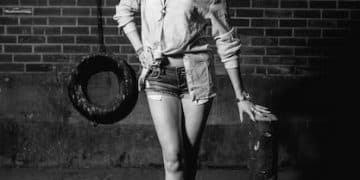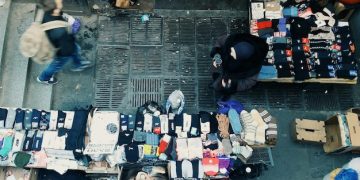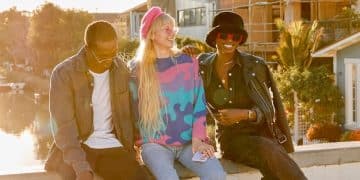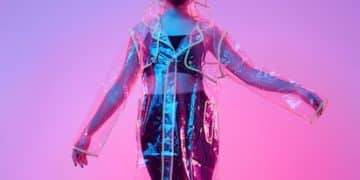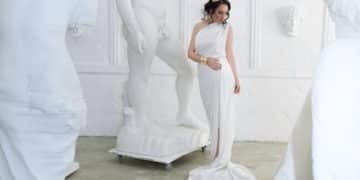The Evolution of Underground Fashion: Tracing Trends from the 1970s to 2025
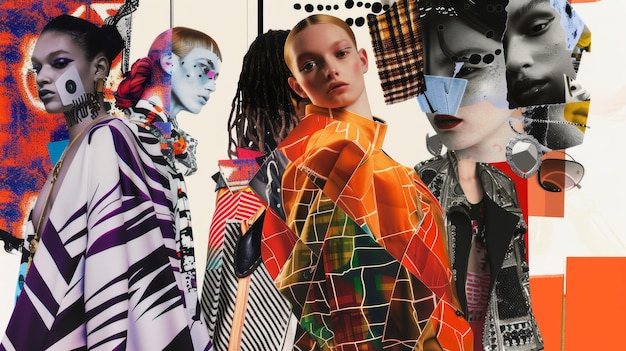
The evolution of underground fashion: tracing trends from the 1970s to 2025 reveals a dynamic interplay between subculture, rebellion, and mainstream influence, transcending fixed definitions and continuously reshaping sartorial landscapes.
Delve into how The Evolution of Underground Fashion: Tracing Trends from the 1970s to 2025 continues to challenge norms, mirroring societal shifts and pushing the boundaries of style.
The Genesis of Underground Fashion: The 1970s
The 1970s marked a pivotal era for the emergence of distinct underground fashion movements, fueled by social and political unrest. This decade witnessed a profound rejection of mainstream consumerism and a desire for self-expression that manifested in radical new aesthetics. From the DIY ethos of punk to the opulent defiance of glam rock, underground fashion became a powerful tool for identity and rebellion, challenging traditional notions of beauty and conformity.
The spirit of the 1970s fostered an environment where individuality thrived, and clothing was often a political statement. Young people, disillusioned with the status quo, sought to create their own visual language, setting the stage for decades of sartorial subversion.
Punk’s Raw Rebellion: Safety Pins and Shredded Fabric
No discussion of 1970s underground fashion is complete without acknowledging punk. Born from the streets of London and New York, punk was more than just a musical genre; it was a socio-cultural phenomenon that deliberately embraced chaos and anti-establishment sentiments. Its fashion was a direct assault on conventional good taste, characterized by rough edges and defiant adornments.
- DIY Aesthetics: Garments were often deconstructed, ripped, and reassembled with safety pins, patches, and hand-painted slogans, reflecting a rejection of mass-produced clothing.
- Provocative Symbolism: Elements like bondage gear, religious symbols inverted, and anti-authoritarian imagery were deliberately used to provoke and shock.
- Iconic Figures: Vivienne Westwood and Malcolm McLaren’s shop, SEX, was instrumental in popularizing the look, providing a commercial hub for the nascent scene.
Glam Rock’s Theatricality and Androgyny
Contrasting with punk’s gritty realism, glam rock offered a fantastical escape through theatricality and deliberate ambiguity. Artists like David Bowie and Marc Bolan blurred gender lines, creating a flamboyant and often glitter-laden aesthetic that celebrated artifice and performance. This subgenre embraced excess, encouraging individuals to adopt alter egos through their attire.
The influence of glam rock extended beyond just music, permeating fashion magazines and even subtle mainstream trends. It introduced a playful, almost surreal, approach to dressing, emphasizing self-creation and the transformative power of costume.
The 1970s laid the groundwork for future underground movements by demonstrating fashion’s capacity to serve as a visual manifesto. It proved that clothing could be a radical act, a form of protest, and a powerful statement of identity, moving beyond mere adornment to become a central pillar of subcultural existence.
The 1980s: Dark Romance and Cyberpunk Aesthetics
As the 1980s dawned, underground fashion continued its trajectory of evolution, moving from the raw aggression of punk towards more refined, yet equally rebellious, expressions. This decade saw the rise of new subcultures, particularly Goth and New Wave, which infused a sense of dark romanticism and futuristic edge into their styles. The socio-political landscape, marked by conservative shifts and the burgeoning digital age, provided a rich backdrop for these movements to flourish.
Underground fashion in the 80s explored themes of alienation, technology, and a fascination with the macabre, demonstrating a growing complexity in how identity was expressed through clothing.
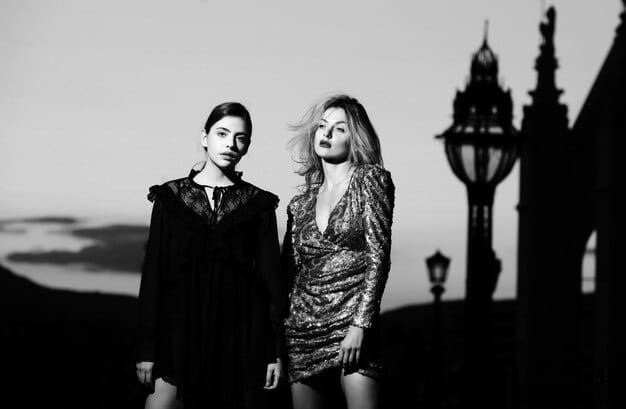
Goth’s Victorian Shadows and Melancholic Allure
Emerging from post-punk, Goth fashion became synonymous with a brooding, melancholic elegance. Heavily influenced by Victorian mourning attire, Romantic literature, and horror imagery, Goth presented a stark contrast to the decade’s bright, consumerist mainstream. It was a movement that celebrated introversion, artistry, and a theatrical approach to life.
- Key Elements: Dark colors (predominantly black), lace, velvet, fishnets, corsetry, and elaborate silver jewelry were staples.
- Hair and Makeup: Pale skin, dark dramatic eyeliner, and backcombed, often dyed, hair were crucial components of the look.
- Influential Bands: Bands like The Cure, Siouxsie and the Banshees, and Bauhaus were not just musical pioneers but also fashion icons, shaping the visual identity of the scene.
New Wave’s Avant-Garde Minimalism and Synthesized Styles
New Wave fashion, while diverse, often embraced a cleaner, more geometric aesthetic, sometimes incorporating futuristic or minimalist elements. It was less about overt rebellion and more about intellectual challenge and artistic experimentation. Influences ranged from art deco to early cyberpunk notions, mirroring the electronic sounds of the music.
This subculture championed unconventional tailoring, bold colors, and an almost detached coolness. It allowed for a blend of sharp lines and subtle provocations, setting it apart from both the overt aggression of punk and the theatricality of Goth.
The 1980s pushed underground fashion further into abstraction and intellectualism. It proved that rebellion could be expressed not just through raw defiance but also through curated aesthetics and a profound sense of self-awareness. The decade solidified underground spaces as incubators for innovative fashion, laying critical groundwork for future developments.
1990s: Grunge, Rave, and the Digital Undercurrent
The 1990s witnessed a fragmentation of underground fashion into diverse, often contradictory, subcultures. The economic boom and the rise of the internet provided new contexts for self-expression, leading to styles that ranged from the deliberately unkempt to the hyper-stylized. Seattle’s grunge scene offered a laid-back, anti-fashion stance, while the burgeoning rave culture embraced neon and futuristic sportswear. Simultaneously, the digital revolution began to subtly influence aesthetics, hinting at the cybernetic future.
This decade was characterized by a pushback against the polished excess of the 1980s, favoring authenticity, comfort, or escapism, often intertwined with evolving underground music scenes.
Grunge’s Anti-Fashion Statement: Flannel and Dishevelment
Grunge emerged as a direct antithesis to consumerist fashion, championing an aesthetic of intentional neglect and comfort. Originating from the music scene in Seattle, it celebrated worn-out clothing, thrift store finds, and a general air of nonchalance. This was fashion as an absence of effort, a rejection of artifice that paradoxically became a global trend embraced by mainstream designers.
- Layering: The core of grunge style involved layering oversized pieces, particularly flannel shirts, worn-out band t-shirts, and ripped jeans.
- Thrift Store Aesthetic: Emphasis on second-hand clothing fostered individuality and an anti-consumerist stance, reflecting the DIY ethos of punk predecessors.
- Influential Icons: Kurt Cobain and Courtney Love became the unintentional poster children for grunge, their personal styles defining the look for many.
Rave Culture: Neon, Baggy Pants, and Euphoric Expression
In stark contrast to grunge’s subdued palette, rave culture exploded with vibrant colors, loose-fitting clothing, and an emphasis on comfort for all-night dancing. Born from acid house music, rave fashion represented liberation, unity, and a psychedelic sensibility. It was a movement that thrived in warehouse parties and open-air festivals, where self-expression knew no bounds.
The clothing reflected the hedonistic and communal spirit of the scene, allowing for unrestricted movement and visual spectacle. Materials like nylon, reflective fabrics, and neon colors were prominent, symbolizing the high-energy and often fluorescent visual experience of the parties. This blend of functionality and performative flair made rave fashion uniquely distinct.
The 1990s demonstrated the diverse directions underground fashion could take, from passive rebellion to active celebration. It highlighted how socio-economic factors and evolving technologies, particularly the internet’s nascent influence, would continue to shape counter-cultural expressions, gradually blurring the lines between subcultural niches and broader trends.
The 2000s: Emo, Scene, and the Rise of Internet Influence
The 2000s marked a significant turning point in the evolution of underground fashion, largely due to the pervasive influence of the internet and the rise of social media platforms. Subcultures like Emo and Scene flourished online, allowing for global dissemination of trends and unprecedented levels of aesthetic curation among individuals. This decade saw a heightened emphasis on emotional expression, individuality, and a fascination with digital identities, pushing boundaries in makeup, hair, and clothing.
The internet no longer just chronicled these trends; it actively shaped them, creating virtual communities where fashion statements were shared, critiqued, and evolved rapidly, blurring the lines between local scenes and global reach.
Emo’s Angsty Romanticism: Skinny Jeans and Band T-Shirts
Emo, short for emotional hardcore, transcended its musical roots to become a prominent fashion subculture characterized by a distinctive, often melancholic, aesthetic. It blended elements of punk, Goth, and indie, creating a look that was both angst-ridden and introspective. The style became emblematic of teenage rebellion, focusing on emotional vulnerability and artistic expression.
- Signature Silhouettes: Skinny jeans (often black), band t-shirts, hoodies, and Converse or Vans sneakers were quintessential.
- Hair and Makeup: Long, often raven-black, fringe swept across one eye, dramatic eyeliner, and sometimes vibrant streaks of color defined the beauty aesthetic.
- Accessory Obsession: Studded belts, checkerboard patterns, peer bracelets, and specific band merchandise were crucial for completing the look.
Scene Kid’s Hyper-Aesthetic: Layered Hair and Bright Colors
Emerging from Emo, Scene fashion took its predecessor’s core elements and amplified them with vibrant colors and a more playful, almost cartoonish, sensibility. Scene kids distinguished themselves through extreme hair, bold patterns, and an eclectic mix of influences, often inspired by Japanese street style and pop culture. This was fashion designed for maximum visual impact, often for online display on platforms like MySpace.
The internet was not just a stage for Scene fashion but also a catalyst for its rapid evolution, with trends spreading globally almost overnight. The constant pressure to innovate and stand out online led to highly stylized looks that were intricately detailed and often self-aware, reflecting a generation growing up with digital identities intrinsically linked to their public image.
The 2000s undeniably cemented the internet as a primary arena for the formation and dissemination of underground fashion. It showed a shift from local scene development to a globally interconnected web of style, where individuality was paradoxical—both celebrated and highly influenced by online trends—a precursor to the influencer culture of the following decades.
The 2010s: Normcore, Health Goth, and Social Media’s Grip
The 2010s presented a complex landscape for underground fashion, characterized by contrasting aesthetics and an undeniable deepening of social media’s impact. On one hand, trends like Normcore emerged, representing a deliberate rejection of overt styling, while on the other, niche movements like Health Goth showcased a highly curated, almost ironic, take on sportswear. The decade was defined by a self-awareness of trends and the powerful role of Instagram, Tumblr, and Pinterest in shaping and disseminating niche styles faster than ever before. Authenticity and irony often intertwined.
This period highlights how “underground” began to take on new meanings, often referring to highly curated, influential micro-trends rather than exclusive geographical scenes. Social media platforms became the new “underground” spaces.
Normcore’s Anti-Fashion Stance: The Power of Blandness
Normcore was a fascinating counter-trend that challenged the relentless pursuit of uniqueness. It wasn’t about being explicitly rebellious but about a conscious decision to opt out of fashion’s competitive cycle. By dressing in intentionally plain, comfortable, and unremarkable clothing, adherents aimed for an ironic invisibility and a focus on self outside of sartorial display. This was a sophisticated rejection of conspicuous consumption.
- Key Components: Unbranded, comfortable basics like plain t-shirts, hoodies, sneakers, and sensible denim were central.
- The Paradox: While seemingly embracing blandness, Normcore was a highly self-aware aesthetic, ironically making a statement by not making one.
- Influence: It subtly influenced mainstream fashion towards more comfort-oriented and minimalist designs, proving that “anti-fashion” could still be fashionable.
Health Goth: Athleticism Meets Darkness
Health Goth was a distinctly internet-born micro-trend that fused athletic wear with a monochromatic, minimalist Goth sensibility. It embraced high-performance fabrics, sleek designs, and an edgy, almost futuristic, aesthetic. This wasn’t about being unkempt or overtly gloomy; it was about a clean, sharp, and sophisticated darkness, often incorporating tech-wear elements.
The rise of Health Goth reflected a growing intersection between fitness culture and niche fashion, a recognition that sportswear could be both functional and fashion-forward. It showcased the power of specific online communities to coalesce around highly specific aesthetics, creating a visual language that was both niche and globally recognizable through platforms like Instagram and Tumblr. This era redefined “underground” as highly specific, often digitally curated, micro-movements.
The 2010s illustrated the increasing fragmentation and irony within underground fashion. Social media’s dominance meant that trends, no matter how niche, could rapidly gain traction and influence, challenging traditional notions of subcultural isolation and introducing a new layer of performativity to personal style.
The 2020s (Until 2025): Hyper-Personalization, Digital Fashion, and Retro-Futurism
As we navigate the first half of the 2020s, underground fashion continues its rapid evolution, heavily influenced by unprecedented global events, accelerating technological advancements, and a growing emphasis on digital identity. The current landscape is characterized by hyper-personalization, a blurring of physical and virtual fashion, and a fascinating blend of nostalgic elements with futuristic visions. Sustainability and ethical considerations are also gaining traction, pushing designers and consumers towards more conscious choices.
The traditional concept of “underground” is continually being redefined, encompassing both tangible styles and purely digital expressions, reflecting a new era where fashion is increasingly fluid and boundary-less.
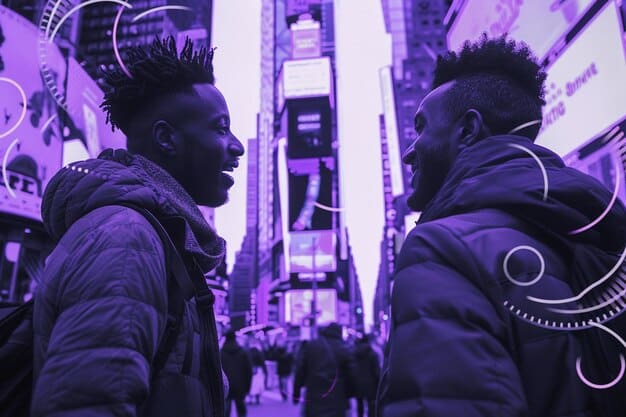
The Metaverse and Digital Fashion’s Emergence
The rise of the Metaverse and NFTs has introduced an entirely new dimension to fashion, with digital garments becoming a legitimate form of self-expression. Brands, both established and indie, are venturing into virtual spaces, designing clothing that exists purely online. This offers unparalleled creative freedom, as the constraints of physical materials and gravity no longer apply.
- Avatar Dressing: Individuals “dress” their digital avatars for virtual events, gaming, and social interactions, making virtual fashion a significant part of their online identity.
- Experimental Design: Digital fashion allows for avant-garde designs that would be impossible or impractical in the physical world, pushing the boundaries of aesthetics and form.
- Accessibility: Digital fashion can democratize high-fashion concepts, making unique garments accessible to a wider audience, albeit in a virtual form.
Retro-Futurism and Upcycled Aesthetics
A prominent trend in the 2020s is the synthesis of nostalgic elements with a forward-looking twist. Retro-futurism blends vintage silhouettes and aesthetics with futuristic materials, cuts, or technological integrations. Simultaneously, there’s a strong emphasis on upcycling and sustainable fashion, driven by environmental consciousness and a desire for unique, one-of-a-kind pieces.
This period showcases a creative tension: a desire to reuse and repurpose materials from the past, while also envisioning what the future of fashion might look like. It’s a pragmatic yet imaginative approach that reflects a generation grappling with both environmental concerns and the endless possibilities of digital innovation.
Looking towards 2025, underground fashion will likely continue its trajectory of hyper-personalization and fluid definitions. The lines between physical and digital, mainstream and niche, will blur even further, encouraging experimentation and a dynamic interplay between different aesthetic influences. The emphasis will remain on individual expression, sustainable practices, and the boundless potential of technology to redefine what fashion truly means.
Beyond 2025: Prognostications for Underground Fashion
As we gaze into the future beyond 2025, underground fashion is poised for even more radical transformations, driven by advancements in material science, artificial intelligence, and evolving socio-cultural narratives. The traditional definitions of “underground” will become increasingly nebulous, as digital realms intertwine with physical expressions, creating a kaleidoscopic array of styles born from niche communities and global influences. The emphasis will shift further towards bespoke, sustainable, and technologically enhanced forms of self-expression, pushing the boundaries of what clothing can be.
We can anticipate a future where garments are not merely static objects but interactive experiences, personalized to an unprecedented degree, and deeply intertwined with personal data and ethical considerations.
Material Innovation and Bio-Fabrication
The coming years will likely see significant breakthroughs in sustainable and high-performance materials. Underground designers, often at the forefront of innovation, will experiment with bio-fabricated textiles grown from microbes or fungi, self-repairing fabrics, and advanced smart textiles that adapt to environmental conditions or user preferences. This shift will move beyond mere eco-consciousness to a fundamental reimagining of fabric itself.
- Algorithmic Design: AI tools will assist in pattern generation and design, allowing for highly complex and customized garments that are tailored to individual biometric data and aesthetic preferences.
- Wearable Technology Integration: Seamless integration of tech into clothing will become more sophisticated, offering embedded sensors, dynamic displays, and even therapeutic functionalities without compromising style.
- Circular Fashion Ecosystems: A focus on truly circular designs, where garments are designed for disassembly, repair, and full biological or technical recycling, will become a hallmark of forward-thinking underground movements.
The Rise of Hyper-Niche Aesthetics and AI-Driven Curation
The digital landscape will continue to foster hyper-niche communities, each developing intricate and highly specific aesthetic codes. AI algorithms, rather than homogenizing trends, might paradoxically enable greater personalization and discovery of new, unique styles by connecting individuals with previously undiscovered aesthetic tribes. The concept of “underground” could refer to styles so unique they appeal to only a handful of individuals or small, globally dispersed online groups.
This dynamic interplay between technology and creativity will redefine how fashion trends emerge and evolve. It suggests a future where underground fashion becomes even more about individual narratives and micro-communities, constantly shifting, adapting, and innovating in response to a rapidly changing world. The journey from 1970s rebellion to 2025’s tech-infused trends is merely a prelude to an even more exciting and unpredictable future.
The future of underground fashion is a canvas of endless possibilities. It promises a continued evolution where technology, sustainability, and unparalleled personalization converge to create expressive forms that constantly challenge the mainstream and redefine the very essence of style. From the raw punk ethos to the sophisticated digital garments of tomorrow, underground fashion will remain a powerful testament to human creativity and rebellion.
| Key Aspect | Brief Description |
|---|---|
| 🎸 1970s Roots | Punk’s DIY rebellion & Glam rock’s theatricality defined early underground fashion defying norms. |
| 💻 Digital Influence | From the 2000s, internet platforms have amplified niche trends like Emo and Scene. |
| ♻️ Future Trends | Post-2025, expect bio-fabrics, AI design, hyper-personalization, and digital-first styles. |
| 🌌 Subculture Fluidity | Underground fashion constantly redefines itself, challenging boundaries and influencing mainstream. |
Frequently Asked Questions About Underground Fashion
▼
Underground fashion typically refers to styles that emerge from subcultures, counter-movements, or niche communities, often outside mainstream commercial trends. It’s characterized by its rebellious spirit, DIY ethos, and a strong emphasis on individual expression, frequently serving as an identity marker for its wearers. These styles often challenge societal norms and conventional aesthetics.
▼
The internet dramatically accelerated the dissemination of underground fashion trends in the 2000s. Platforms like MySpace and Tumblr allowed subcultures like Emo and Scene to connect globally, sharing styles and influencing rapid evolution. This created a new dynamic where trends could emerge and spread virtually overnight, blurring geographical boundaries and fostering online aesthetic communities.
▼
Normcore is an anti-fashion movement from the 2010s that advocates for dressing in unpretentious, comfortable, and unremarkable basic clothing. It was considered underground because it deliberately rejected the relentless pursuit of uniqueness and trend-following, thereby subverting mainstream fashion’s core tenets. Its “underground” nature came from its ironic detachment and subtle critique of consumerism.
▼
Digital fashion, through NFTs and metaverse platforms, is fundamentally reshaping underground trends by allowing for unprecedented creative freedom. Designers can create virtual garments unbound by physical limitations, pushing aesthetic boundaries. This provides new avenues for self-expression, democratizes access to unique styles for avatars, and creates entirely new digital fashion communities and economies within the underground sphere.
▼
Beyond 2025, underground fashion is expected to embrace advanced material science, like bio-fabricated textiles, and AI-driven design processes. It will likely feature increased hyper-personalization, seamlessly integrating wearable technology. The focus will further shift towards ethical and sustainable practices, alongside a continued blurring of physical and digital expressions, leading to complex and highly curated niche aesthetics.
Conclusion
The trajectory of underground fashion from the DIY punk aesthetics of the 1970s to the prospective digital hyper-personalization of 2025 and beyond illustrates a continuous defiance of conventional norms. Each decade has seen distinct subcultures emerge, reflecting societal shifts, technological advancements, and an unwavering human desire for authentic self-expression. Whether through ripped denim, dramatic makeup, or virtual garments, underground fashion consistently innovates, influencing the mainstream while retaining its rebellious spirit. It remains a dynamic canvas for identity, resistance, and the boundless evolution of style, proving that true originality often blossoms beneath the surface.
